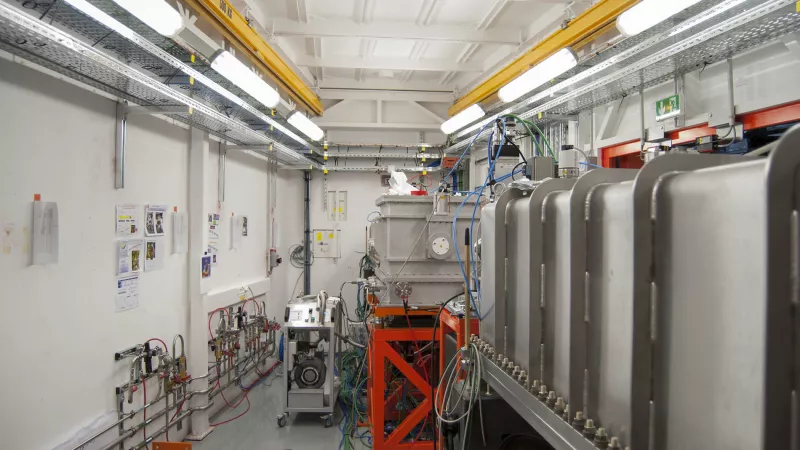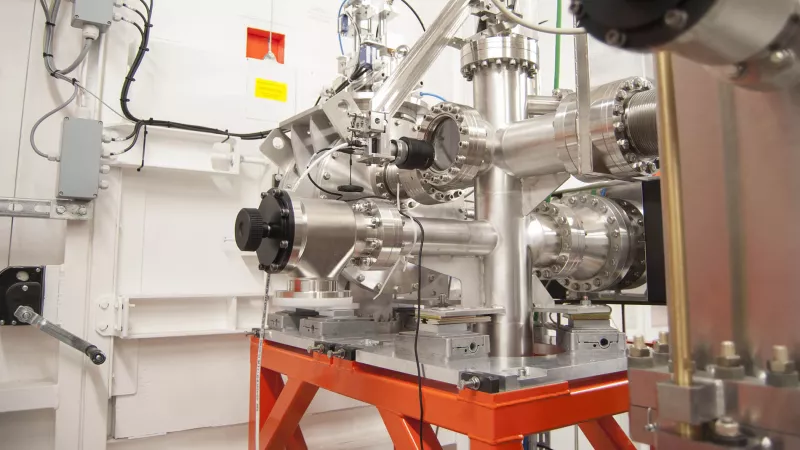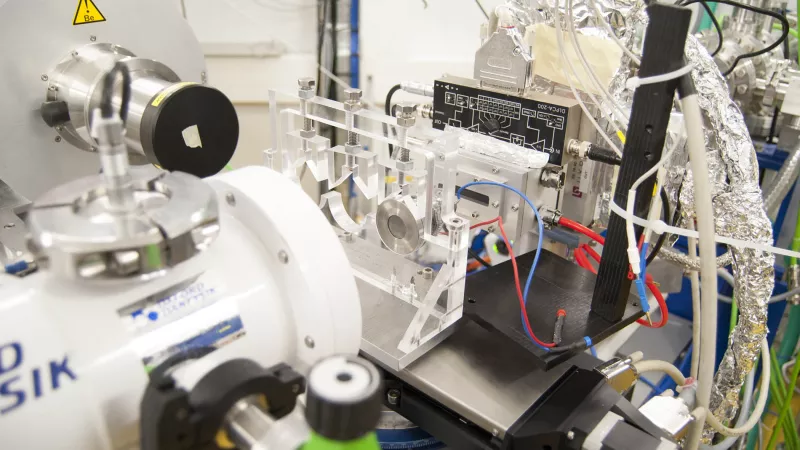Synchrotron platform
Introduction to the synchrotron platform
The synchrotron platform of the RS2E is hosted at SOLEIL synchrotron, where various X-ray based techniques, offered by the 29 beamlines at SOLEIL are used to study electrochemical reaction mechanisms and degradation phenomena occurring in rechargeable batteries and supercapacitors.
Different information can be retrieved at different length scales from the bulk to the surface of the electrodes using ex situ, in situ or operando approaches, depending on the energy range of the beamline and the proposed technique, which can be roughly summarized as follows:
- Hard XAS/XES/RIXS (bulk, compatible with operando experiments)
Electronic structure, chemical information, local structure, oxidation state for element Z≥24 - HAXPES (buried interfaces, vacuum environment)
Chemical composition, oxidation state for core level energies ≤ 10 keV - Soft XAS/RIXS (sub-surface, vacuum environment)
Electronic structure, chemical composition, oxidation state for elements Z ≤ 24 - XRD and PDF (bulk, compatible with operando experiment)
Long-range structure in crystalline or poorly crystalline samples - Imaging (sample environment and spatial resolution depend on the technique)
- Scanning Transmission X-ray Microscopy (soft X-ray)
- Nano-XPS (soft X-ray)
- Transmission X-ray Microscopy (hard X-ray)
- Tomography (hard X-ray)
- Bragg Coherent X-ray Diffraction Imaging (hard X-ray)
- XRD/PDF computed tomography (hard X-ray)
Reminder: Two deadlines for standard proposals submission at SOLEIL: mid-September and mid-February.
Electrochemistry Lab @ SOLEIL
The users of the Electrochemistry Lab must contact AI or JS at least 3 weeks before the experiment to create their own account on ClusterMarket app and to book the needed equipment.
List of equipments available in the RS2E lab at SOLEIL:
- Glovebox with
- Coin cell crimper
- Hydraulic press (0-5T)
- Microbalance (max 10g, 1µg resolution)
- Microscope (magnification)
- Eppendorf pipettes (1-10µL and 10-100µL)
- Sealing machine
- Other equipment for use in
- Biologic SP300, 2 channels (inside or outside glovebox), low current and impedance options
- Büchi B-585 drying furnace (40-300°C)
- Magnetic stirrer, hot plate, vortex
- Boehm hole punch (2-20mm in diameter)
List of equipment available in the RS2E labs and currently used at SOLEIL:
- Transfer chambers to transfer samples from the glovebox to vacuum chambers for ex situ characterization of electrodes (GALAXIES)
- Operando cells for tomography (PHENIX: 10.1002/anie.201704271)
- In situ cell for aqueous/acid/basic electrolytes and self-standing SC electrodes (IMN: 10.1002/smll.202002855)
- In situ cell for aqueous electrolyte and MSC thin film electrodes (IEMN: 10.1039/c9ee03787j)
- XRD/XAS/XES in situ cells equipped with Be, glassy carbon or Kapton windows (CDF, LRCS, ICGM, ICMCB: 10.1149/1.3355977 and 10.1107/S160057671601428X)
List of selected papers:
- XAS
- The rise of X-ray spectroscopies for unveiling the functional mechanisms in batteries (DOI: 10.1039/D1CP03263A )
- Applying chemometrics to study battery materials: Towards the comprehensive analysis of complex operando datasets (https://doi.org/10.1016/j.ensm.2019.02.002)
- Operando X-ray absorption spectroscopy applied to battery materials at ICGM: The challenging case of BiSb's sodiation (https://doi.org/10.1016/j.ensm.2019.06.027)
- Unveiling Pseudocapacitive Charge Storage Behavior in FeWO4 Electrode Material by Operando X-Ray Absorption Spectroscopy (https://doi.org/10.1002/smll.202002855)
- Novel insights into the charge storage mechanism in pseudocapacitive vanadium nitride thick films for high-performance on-chip micro-supercapacitors (https://doi.org/10.1039/C9EE03787J)
- Vanadyl-type defects in Tavorite-like NaVPO 4 F: from the average long range structure to local environments (https://doi.org/10.1039/C7TA08733K)
- HAXPES
- Fundamental interplay between anionic/cationic redox governing the kinetics and thermodynamics of lithium-rich cathodes (https://doi.org/10.1038/s41467-017-02291-9)
- Activation of anionic redox in d0 transition metal chalcogenides by anion doping (https://doi.org/10.1038/s41467-021-25760-8)
- XRD
- How Crystallite Size Controls the Reaction Path in Nonaqueous Metal Ion Batteries: The Example of Sodium Bismuth Alloying (https://doi.org/10.1021/acs.chemmater.6b00491)
- Imaging (XRD/PDF-computed tomography)
- Chemical Structures of Specific Sodium Ion Battery Components Determined by Operando Pair Distribution Function and X-ray Diffraction Computed Tomography (https://doi.org/10.1002/anie.201704271)
Non-permanents:
- Federico Giovanni Caponne, PhD student (BIG-MAP) : federico.capone@synchrotron-soleil.fr
- Mohel Gilles, Post-Doc fellow (BIG-MAP) : gilles.mohel@synchrotron-soleil.fr
- Lucia Perez, Post-doc fellow (RS2E) : lucia.perez@synchrotron-soleil.fr
- Jazer José Togonon, PhD Student (DESTINY) : jose.togonon@synchrotron-soleil.fr


